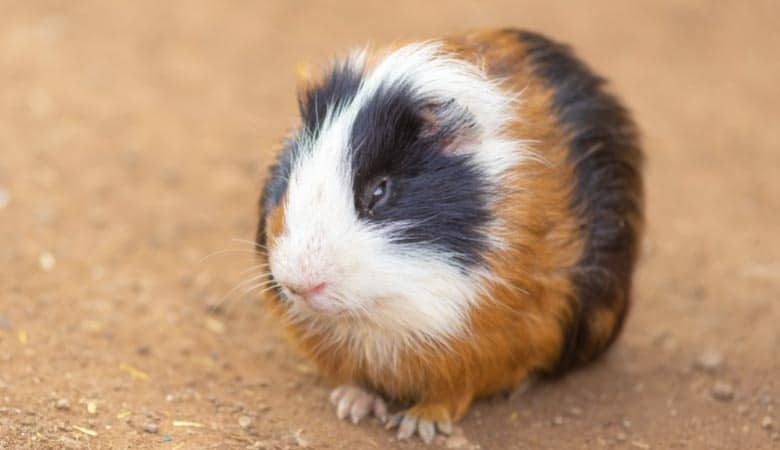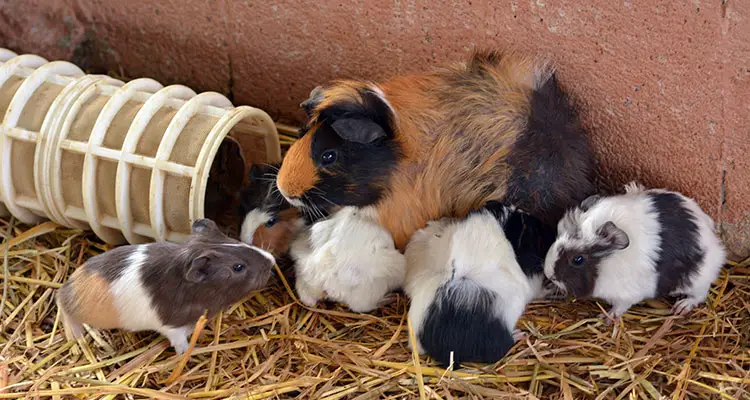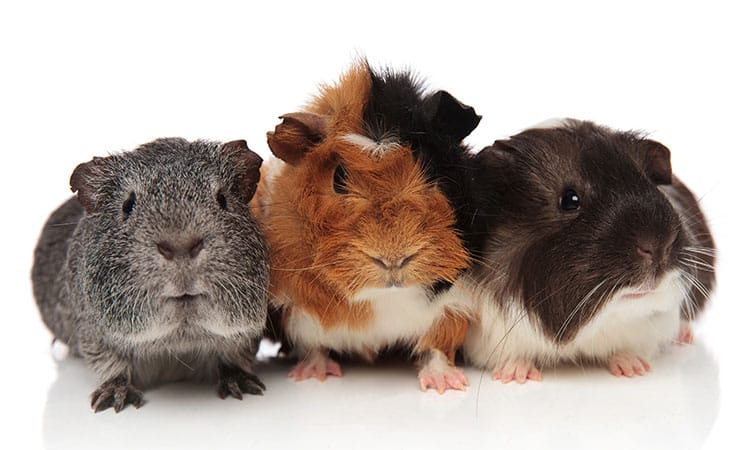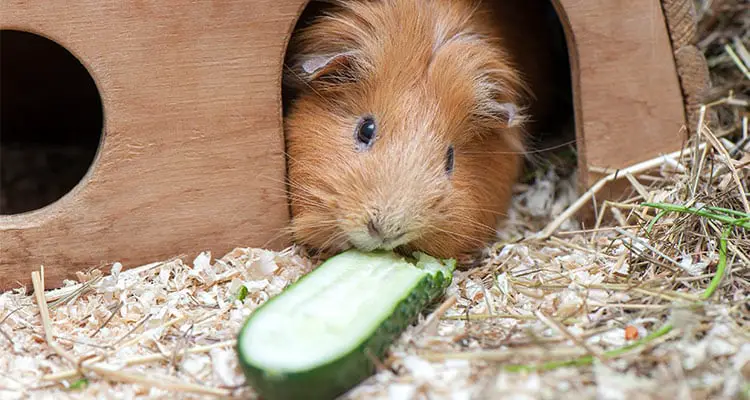Did you know guinea pigs live in the wild?
Many different species still live in their natural habitat, but where these guinea pigs are found is the question.
Where do guinea pigs live in the wild?
Guinea Pigs are native to the South American continent, from Venezuela to southern Patagonia. However, they do not live in western Chile or most of the Amazon River.
Guinea pigs are more than just cute little rodents people keep as pets. Some that still exist in the wild. Below are 8 facts about guinea pigs.
Facts About the Guinea Pig
Guinea pigs are known for the squealing sound they make, and their calm, docile demeanor. But what else can be learned about wild guinea pigs?
- Their habitats range from forests to coastal areas.
- They have different names in other countries.
- There are multiple theories about the origin of the guinea pig name.
- The average litter is 3 or 4 pups.
- Guinea pigs are highly intelligent and perceptive.
- There are 6 different species.
- They differ in size but have other shared characteristics.
- Guinea Pigs do not eat meat.
1. Their Habitats Range from Forests to Coastal Areas

As mentioned, wild Guinea pigs call South America their home. Guinea pigs can be found in:
- Brazil
- Venezuela
- Colombia
- Ecuador
- Guyana
- Bolivia
- Northern Argentina
- Uruguay
- Paraguay
- Northern Chile
- Peru
Guinea pigs can live in a variety of environments. They live in:
- Forests
- Moist savannas and scrub deserts
- Grasslands and bushy areas
- Coasts of southeastern Brazil
- Swamps
- Rocky areas
Guinea pigs can also live in low elevations or elevations up to 16,000 feet.
2. They Have Different Names in Other Countries
Guinea pigs are not known by this name in countries like Germany. Interestingly, in nearly every country, guinea pigs keep the pig undercurrent, even though they are not related to pigs.
Here are some names guinea pigs are known by in other countries that have the pig trend:
- Germany—meerschweinchen (little sea pigs)
- Portugal—porchitas da India (little pigs from India)
France is one country that does not have the pig overtone. In France, guinea pigs are called lapins de Barbarie (Barbary rabbits).
3. There Are Multiple Theories About the Origin of the Guinea Pig Name
If guinea pigs aren’t from Guinea nor related to pigs, where did their name come from? Multiple theories are surrounding this, but nobody knows for sure. Some theories include:
- Their roasted meat could have reminded Europeans of suckling pigs
- The squealing sounds they make
- The price of a guinea pig in 16th-century England (1 guinea)
- Ships leaving the ports of Guiana or Guinea may have carried guinea pigs to the European markets
4. The Average Litter is 3 or 4 Pups

Adult males are called boars, adult females are called sows, and babies are called pups. The gestation time is two or three months and the average little is 3 or 4 babies, though up to 13 pups have been recorded.
They are born with fur. They also have their eyes open at birth, unlike some other animals like kittens or puppies.
Pups nurse for nutritional purposes but can eat solid foods right after birth. The pups are weaned after 3 weeks and are matured by 2-3 months old.
5. Guinea Pigs Are Highly Intelligent and Perceptive
It is interesting to know guinea pigs are highly intelligent and perceptive animals. They are smart enough to recognize certain sounds, smells, and faces.
They make different noises to communicate and show how they are feeling. To name a few, Guinea pigs can show:
- Excitement
- Happiness
- Confusion
- Annoyance
- Anticipation
Guinea pigs can show their feelings by making noises such as:
- Growling
- Purring or rumbling
- Shrieking
- Squealing
- Wheeking
- Chutting
Guinea pigs are also known to chatter their teeth. They typically do this when they are unhappy or even angry.
Guinea pigs are social and expressive animals who stick together. You should avoid keeping your guinea pigs alone.
6. There Are 6 Different Species

There are 6 different species of guinea pigs that live in the wild. Most of these species are not endangered, but 1 is critically endangered due to not having any restrictions or protections for them on the Island that species resides, Moleques Island do Sul.
Along with the different species, there are 13 common types of breeds of the guinea pig. The varying breeds are characterized by their differences in:
- Hair color
- Hair texture
- Sheen and color patterns of their hair
7. They Differ in Size but Have Other Shared Characteristics
The different species of guinea pigs have different body sizes, but they have plenty of shared characteristics. Some of these characteristics include:
- Stout body
- Short tail
- Large head
- Small, petal-shaped ears
- Small, triangular mouths
- 20 continuously growing teeth
- Soles of their feet are hairless
- Sharp claws
8. Guinea Pigs Do Not Eat Meat

Guinea pigs are herbivores, so their diet consists of vegetables and fruits. In the wild, they will eat what vegetation they can find, including grasses, leaves, and fruit. Guinea pigs have a love for vegetables and fruits such as:
- Kale
- Mustard greens
- Bell peppers
- Carrots
- Bananas
- Apples
- Blueberries
Guinea pigs rely on Vitamin C to stay healthy and but they do not create their own. So, finding foods rich in Vitamin C in the wild is better for them. If they do not get enough Vitamin C in their diet, they can develop scurvy, which is a disease characterized by swollen, bleeding gums, and the reopening of previously healed wounds.
Guinea pigs require a large amount of water. They eat a lot of moist foods to keep them hydrated along with using a water supply.
Guinea Pig Natural Habitat
Sometimes we are on the lookout for guinea pigs in the wild, but alas, there will be no chance of spotting the relatives of our domesticated cavies. They simply do not exist in the same shape and from.
Their relative can still found in South American countries such as:
- Brazil
- Venezuela
- Colombia
- Ecuador
- Guyana
- Bolivia
- Argentina
- Uruguay
- Paraguay
The original instinct of a guinea pig is quite lazy, but safety oriented. They don’t want to exert the energy to dig their own burrows in these wild habitats. They look for burrows that have already been dug by rodents who have abandoned them.
Just like in our home, the guinea pigs that were domesticated 500 years ago and their relatives that still rest in South American burrows like to be in groups of 3. They can expand their family to 10, but will branch out once their numbers swell more than that.
Final Word
There are a few interesting things to keep in mind about wild Guinea pigs if you ever happen to spot one.
- Temperament
- Active times
- Their role in the ecosystem
1. Temperament
By nature, Guinea pigs have an easy-going temperament. In general, Guinea pigs are:
- Gentle
- Docile
- Social and vocal
- Skittish
Wild Guinea pigs can be a bit more aggressive than their tamed counterparts, but overall, they are passive rodents who gather in large groups.
2. Active Times
Since Guinea pigs are skittish creatures of prey, they are constantly on alert for predators, so they do not sleep very much. When they do sleep, it is more like power naps of 10 minutes or less at a time. Guinea pigs average a about 4 hours of sleep a day.
Guinea pigs are most active during dusk and dawn, but they are not considered diurnal or nocturnal (day or night animals). This is because though they are most active during the day, they are sporadically awake and active throughout the night.
3. Their Role in the Ecosystem
Guinea pigs are more than just cute rodents. They are living, social creatures who have their role to play in the ecosystem chain. They eat plant material but are prey for various other animals such as:
- Mammals
- Birds of prey
- Reptiles like anacondas
- Humans
It’s an interesting fact that Guinea pigs are a part of the human diet in some areas of South America.
Guinea pigs were found by the Incas more than 3, 000 years ago. The Incas bred and used guinea pigs for:
- Pets
- Food
- Sacrifices to their gods
However, the species the Incas used, no longer exist in the wild.
They are also a common scientific research subject, which is where the saying someone is being a guinea pig came from. Nevertheless, they are very clever and intelligent. Here are some great explanations about guinea pig intelligence in this article.
There are some zoos, such as the San Diego Zoo, which house different species of the Guinea pig.


